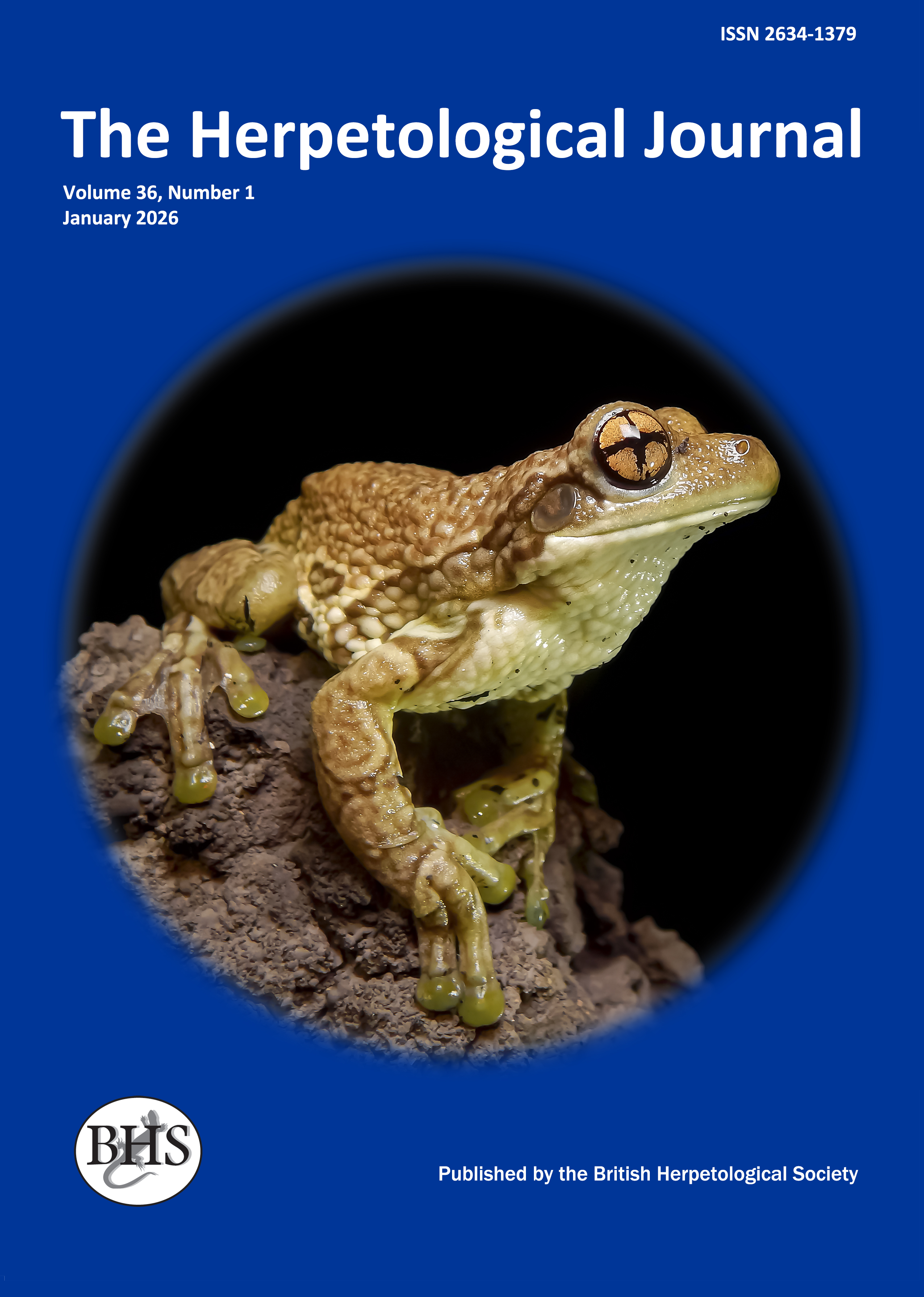
The Herpetological Journal
The Herpetological Journal is the Society's prestigious quarterly scientific journal. Articles are listed in Biological Abstracts, Current Awareness in Biological Sciences,Current Contents, Science Citation Index, and Zoological Record.
ISSN 0268-0130
2023 Impact Factor for the Herpetological Journal is 1.1, with the Journal sitting just below Quartile 2 in Zoology, at percentile 46.9
pdf 06. Experimental evidence that the bullfrog (Rana catesbeiana) is a potential carrier of chytridiomycosis, an emerging fungal disease of amphibians
1684 downloads
Open Access
pp.201-207
Authors: P. Daszak, A. Strieby, A. A. Cunningham, J. E. Longcore , C. C. Brown2 And D. Porter
Abstract: To test the susceptibility of bullfrogs (Rana catesbeiana) to amphibian chytridiomycosis, groups of captive bred, recently metamorphosed bullfrogs were inoculated with zoospores of Batrachochytrium dendrobatidis, the causative agent of chytridiomycosis, and assayed for clinical and pathological signs of infection. A novel technique for counting B. dendrobatidis zoospore inocula is described. Inoculation regimes varied from single exposures of 1-10 million zoospores per animal to inocula of 10 million zoospores per animal per day for a 31 day period. Twenty-five to fifty percent of each inoculated cohort was histological ly positive for B. dendrobatidis on necropsy. However, lesions were focal, small with relatively little thickening of the keratinized epidermis and no clinical signs of chytridiomycosis were observed. Only one animal died during the experiment, due to cardiac puncture procedure. A fungal isolate used in these experiments was inoculated onto four metamorphosed poison dart frogs (Dendrobates tinctorius) to test whether B. dendrobatidis had become attenuated following repeated passage in culture. All four animals died within 30. days with severe chytridiomycosis, whereas two uninfected controls survived, demonstrating that the fungus had not become attenuated. These results provide the first experimental evidence that bullfrogs can be infected by B. dendrobatidis, but are relatively resistant to the disease chytridiomycosis, which is lethal to many other amphibian species. By demonstrating that R. catesbeiana is likely to be an efficient carrier of this pathogen, our experimental data add weight to the hypothesis that this host species is important in the spread of chytridiomycosis, particularly by commercial activities.
Keywords: amphibian decline, Batrachochytrium dendrobatidis, chytrid fungus, frog

